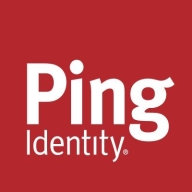

Imprivata OneSign and Ping Identity Platform are compared based on user reviews in identity management solutions. Imprivata OneSign has the upper hand in pricing and support, while Ping Identity Platform leads in features.
Features: Imprivata OneSign offers advanced authentication capabilities, seamless integration with various applications, and enhancement of security. Ping Identity Platform provides extensive identity management features, strong authentication options, and seamless SSO capabilities, making it a robust solution for complex environments.
Room For Improvement: Imprivata OneSign needs better reporting tools, more intuitive administration functionalities, and faster customer service response. Ping Identity Platform needs improved customer service response times, a more simplified setup process, and more user-friendly documentation.
Ease of Deployment and Customer Service: Imprivata OneSign is praised for a straightforward deployment process but has slower customer service responses. Ping Identity Platform deployment is more complicated but benefits from extensive documentation and support, though quicker service is desired.
Pricing and ROI: Imprivata OneSign is noted for competitive pricing and satisfactory ROI, while Ping Identity Platform delivers significant ROI through its comprehensive feature set, justifying the higher initial setup costs.

Imprivata OneSign delivers fast, secure no-click-access to the applications and information that care providers need, whenever and wherever they need it.
Security and regulatory compliance requirements mandate user authentication technology for accessing workstations and applications. As a result, care providers need to enter unique usernames and passwords (or PINs) for order signing, documentation signing, medication reconciliation and most other applications throughout their workflow. These laborious login requirements can disrupt clinical focus and obstruct patient care.
We monitor all Single Sign-On (SSO) reviews to prevent fraudulent reviews and keep review quality high. We do not post reviews by company employees or direct competitors. We validate each review for authenticity via cross-reference with LinkedIn, and personal follow-up with the reviewer when necessary.